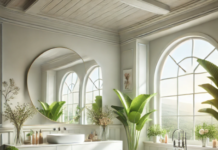Decorating Your Garden With Herbs – Most herbs are perennial plants that need six to eight hours of sunlight and well drained soil. Some are annuals and must be replanted every year. Even some annuals like rosemary and lemon verbena become annual in very cold areas of the country unless brought inside during the coldest part of the winter. One of the nicest things about herbs is that most can grow even in small areas with the help of containers.
If you have never cooked with herbs be prepared to have your taste buds awakened. You may want to start with a small herb garden. We suggest beginning with containers.
The plants of choice could be one plant of thyme, tarragon, and oregano (each), two chive plants, and three or four basil plants. Note that there are many different flavors of basil. You may want to try a couple of different flavors.

Place your herbs in containers large enough for them to grow. Potting soil makes a good substrate. Place the containers in areas where they get plenty of sunlight. Use these containers for your outdoor decorating.
If you decide to plant directly into the ground be sure to work your soil first. Break up large clods and work in some organic material, about six inches into the ground. Place your herbs with the short ones – thyme and chives – in front, tarragon in the middle, and the taller plants in the back. Allow a foot between the thyme and chives and two feet between the other herbs.

Keep your new plants moist for the first week or so. Gradually allow them to acclimate to the drier weather. When weeds come up (and they will), pull them so they don’t compete with the plants for water and nutrients.
As your plants mature take cuttings often. This will keep the plant full and producing new leaves. Also, fertilize basil about every six weeks. Mulching helps keep the moisture in the ground. Mulching also helps in the cold weather to protect roots.

Harvesting is simply picking a few leaves for dinner. This is best achieved when the garden is close to the kitchen. Another idea is to collect a small bunch of your herbs and place them in a glass with water. Place this on a window sill and now you don’t have to go outside to get your herbs. Everything is at your finger tips.
Chamomile is a beautiful edible flower. You probably have heard of chamomile tea. Use the flower heads for herbal tea and the leaves and petals in salads. Another edible flower is chive. The flower petals are crunchy when young. Pull apart and sprinkle on your food. Lavender tea is made from the flower head of the lavender plant. This creates a relaxing feeling and is great for insomnia. Other edible flowers include saffron and savory.




























